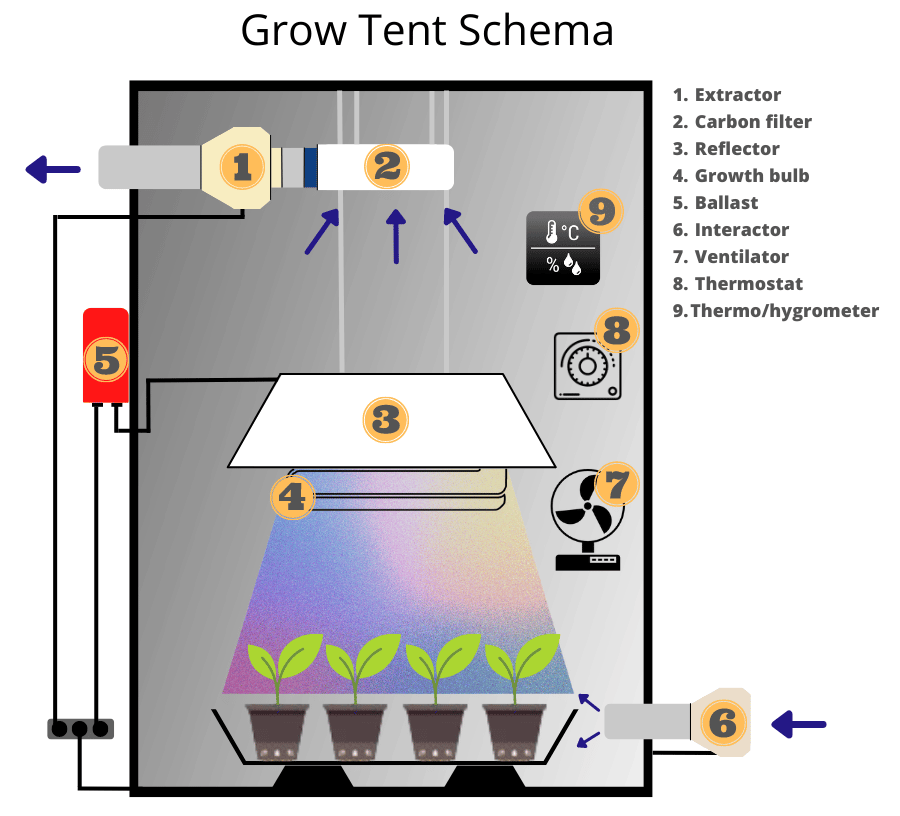Hydroton, also known as expanded clay pebbles or grow rocks, has become a staple growing media for hydroponic gardeners. Made from 100% natural clay, these small pebble-shaped pieces provide the perfect substrate for hydro systems when they are inert, pH stable, and offer substantial air pockets for healthy roots. Using Hydroton allows for rapid drainage and drying out between waterings to prevent diseases related to oversaturation.
When shopping for the best Hydroton, you want to look for clay pebbles that are sized appropriately for your planned hydro method (e.g. flood and drain vs drip feed), provide adequate air pockets and spacing between the pieces, and are free from dust or shattered shards. In this guide, we highlight the key factors in choosing top-quality clay pebbles for your hydroponic setup.
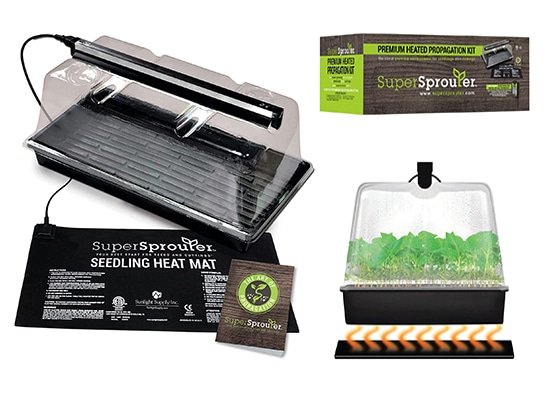 Super Sprouter Premium Propagation Kit with Heat Mat, 10
Super Sprouter Premium Propagation Kit with Heat Mat, 10
- Dome & T5 Light, 5 Piece, Black/Clear
- Art of Propagation booklet with expert advice for starting seedlings and cuttings
- Super Sprouter Seedling Heat Mat 10 in x 21 in is ETL listed
What is Clay Pebbles (Hydroton)?

Hydroton, often referred to by the brand name LECA (Lightweight Expanded Clay Aggregate), are small clay pebbles used frequently in hydroponic growing systems. They are made by heating clay to very high temperatures, causing the clay to expand and become porous. The result is these lightweight pebble-shaped pieces that have excellent water and air retention properties.
Hydroton clay pebbles have a neutral pH level and do not interact with nutrient solutions, making them an inert, stable and reusable growing media. Each clay piece features many tiny air pockets that provide oxygen to plant roots while also allowing for quick drainage – avoiding potential root rot issues. This makes them the top choice for media beds in ebb and flow (flood and drain) systems.
The clay pebbles are also round and smooth, which provides nice spacing between pieces to prevent compaction when used in net pots, allowing delicate roots to access air and nutrients easily. Since they do not decompose, Hydroton clay can be rinsed and sterilized for re-use for many grow cycles.
Hydroponic gardeners love working with Hydroton clay pebbles because they are lightweight, completely natural, and a reliable performer for healthy root systems. They also come in different sizes to suit the needs of different hydro methods. The 10-16mm size works well for flood and drain gardens, while 4-10mm suits drip systems.
How Do Clay Pebbles Work?

Clay pebbles like Hydroton provide an excellent growing media for hydroponics because they help anchor and support plants while also allowing air flow and drainage. The porous structure and spacing of the individual pieces offers the ideal environment for plant roots.
Each clay granule has tiny air pockets throughout that retain some water and oxygen. This oxygen helps promote beneficial bacteria and healthy white root growth. Having spaces between the pebbles allows for drainage, so oxygen can reach the roots. This air pruning stops excessive horizontal growth and instead encourages more vertical roots that access nutrient solution faster.
Having a nice gapped spacing between pebbles also prevents compression and suffocation of the root zone. In denser media like rockwool, tight stacking can limit airflow. The smooth round Hydroton balls avoid this, and roots easily swell into the gaps naturally seeking moisture and nutrients.
One other advantage is that the clay pebbles do not interact with the hydro solution chemistry, keeping the pH stable, unlike other media like coconut coir. Their inert properties mean no fertilizer gets bound up by the media. This pH neutrality combined with good drainage and airflow makes Hydroton the first-choice for many expert hydro growers.
Properly sizing the Hydroton pieces for the hydro method, filling nets pots correctly, and maintaining consistent waterings optimizes how the clay pebbles foster healthy roots and vigorous growth.
Advantages Of Using Hydroton
Hydroton expanded clay pebbles have quickly become a staple growing media of hydroponic gardens due to their many benefits suited specifically to water-based systems. Some top advantages of using Hydroton include:
- Reliable drainage. The porous structure and smooth, rounded shape of the clay granules provides excellent spacing for fast drainage between pieces to avoid root rot and oversaturation. Water flows freely through the gaps when properly filled, and the pebbles themselves wick excess moisture down and away from roots. This keeps oxygen flowing to plants even after heavy waterings or flooding.
- Improved aeration. Each clay pellet contains many microscopic pores that retain both water and air well to benefit roots. This provides necessary oxygen to plant roots while also wicking nutrients easily from the hydro solution. The clay spacing again allows airflow to prevent suffocation by keeping the root zone from compacting tightly.
- One of the best assets of clay pebbles is that they can be rinsed, sterilized with a mild bleach solution, and refilled for multiple grow cycles, saving costs. As an inert growing media, Hydroton does not break down over time or interact with fertilizer chemistry. These properties make it a sustainable media for repeated harvests.
- Easy to find. Hydroton expanded clay pebbles are readily available at most hydroponic retail stores and online shops catering to cannabis and food growers. They come sized for different systems like flood and drain or drip feed, are lightweight to transport, and sourced as a sustainable media that lasts for years.
- Hydroton clay pebbles remain very cost-effective compared to other mainstream hydroponic substrates like rockwool or coconut coir fiber. Especially for larger grow operations, the ability to reuse Hydroton for years with proper cleaning results in very competitive lifetime value. Home growers also benefit from reasonable Hydroton prices per bag offline and online.
- Long-lasting. Given their durable ceramic composition and resistance to decomposition, these clay granules can last for 5–10 years or more before needing replacement. Even longer lifespans are possible for small hobby growers who sterilize and reuse their clay pebbles in limited volumes for personal harvests. This longevity gives confidence to invest upfront.
- Offers stability. The reliable physical properties and pH neutrality of the clay offers consistent growing conditions over time, unlike some organic media. It’s difficult to oversaturate when properly filled, maintaining healthy spacing and drainage minus potential mold risks. This stability is reassuring for newer hydroponic gardeners.
- Prevents soil erosion. In outdoor hydroponic gardens with heavy rain or wind exposure, Hydroton clay pebbles stay put, keeping delicate root systems covered safely unlike bare soil. The heft of the pieces plus the weight of mature plants makes the crop less vulnerable to being toppled over by weather.
- Eco-friendly. As a sustainable media sourced from purified natural clay, Hydroton aligns well with environmentally-conscious cultivation. Especially when reused responsibly for multiple grow cycles, clay pebbles greatly lower long term waste versus constantly replacing disposable grow substrates.
 General Hydroponics Flora Grow, Bloom, Micro Combo Fertilizer, 1 gallon (Pack of 3)
General Hydroponics Flora Grow, Bloom, Micro Combo Fertilizer, 1 gallon (Pack of 3)
- Сomplete nutrient system
- Highly purified concentrates for maximum solubility
- NASAAntarctic research scientists choose flora series!
LECA Drawbacks
While clay pebbles offer many advantages for hydroponic growing, LECA media does come with some potential drawbacks to consider:
- Can compact over time. Over several grow cycles, the clay pebbles may compress down, limiting drainage and airflow. This tends to happen if the weights of large plants compress unfilled space. Adding more media or refluffing restores spacing.
- Requires rinsing before use. Brand new bags often contain clay dust that should be rinsed thoroughly before filling nets pots or beds. Otherwise, the media can become dense. Rinsing ensures nice spacing between clean pebbles suited for healthy roots.
- Dries out faster than other media. Due to the excellent drainage, LECA does dry out rather quickly as water fully permeates the pebbles. Growers must monitor moisture levels closely and water accordingly to keep roots hydrated. Automated systems help provide consistent moisture.
- Can raise pH over time. While chemically inert at first, some minerals may accumulate in older, reused batches, raising pH slightly. Test and adjust pH when reusing LECA. Refreshing with 30% new media can restore neutrality.
- Not ideal for seedlings or microgreens. The gaps between clay pebbles pose challenges securing tiny seeds and younger plants in nets pots. Smaller LECA granules paired with stabilizing cubes or collars allows early germination. Avoid using only large Hydroton for small plants.
The ideal hydroponic substrate balances aeration, stability, and spacing for adequate moisture retention. LECA clay pebbles shine in these areas but perform best when properly prepared and monitored — especially for best results over many repeated grow cycles.
Suitable Plants To Grow With Clay Pebbles
When it comes to growing plants in clay pebbles, it is important to select varieties that will thrive in a fast-draining, loosely packed medium. Clay pebbles offer superb hydration and aeration for roots, while preventing soil compaction issues. Their weight makes them ideal for growing robust plants in containers and raised garden beds.
Many vegetables and herbs appreciate the free drainage, allowing their fruits and leaves to grow mold and disease-free. Though not all plants fare well in pure clay pebbles, the following selection provides bountiful harvests while taking advantage of this unique growing method:
- Lettuce and leafy greens. Their roots receive ample air circulation to prevent rot. Leaves emerge rapidly from clay pebbles. These plants also benefit from the hydration properties of clay.
- Herbs. Many culinary herbs like parsley, basil, oregano, and thyme thrive planted in clay pebbles. Their scent and flavor are often more intense when grown this way. Clay pebbles allow quick drainage after watering to prevent soggy soil. Popular medicinal herbs such as lavender and lemon balm also grow well this way.
- Strawberries. They send out long runners that dangle over the edges of pots, making clay pebbles a suitable growing medium. Their fruit will be cleaner and mold-free since it’s not on wet soil. The pebbles provide excellent drainage and air circulation around the crown. Strawberries thrive with regular feeding in clay pebbles.
- Peppers. Sweet bell peppers and spicy varieties grow very well in clay pebbles. Their central root system appreciates the loose, well-drained environment. Clay pebbles heat up quickly in the sun, promoting faster pepper growth. Use a cage or trellis to support heavy fruiting peppers grown this way.
- Tomatoes. Cherry tomatoes and patio varieties produce abundantly, grown in clay pebbles in containers. Drainage and air flow is ideal to prevent disease. Bumblebees readily pollinate tomatoes’ flowers when grown at height in pots. Caged support is recommended for full-sized indeterminate tomatoes.
- Eggplant. They thrive in the loose, well-aerated environment of clay pebbles. Their fruits will grow larger with more consistent moisture. No soil compaction or waterlogging to cause fruit rot. Use tall cages to support eggplants’ heavy fruits on this fast-draining medium.
- Cucumbers. Bush cucumbers and vining varieties grow well in clay pebbles in containers. Excellent drainage prevents soil fungi and fruit rot. Trellis vining cucumbers for straight, full-sized fruits. Pinch side shoots to promote cucumber yield with this fast-draining medium.
Things To Consider Before Using Hydroton
When deciding whether clay pebbles are the right hydroponic growing medium for your plants, there are a few key considerations to weigh first. Carefully examine your plant choices, climate conditions, spacing constraints, and irrigation method before investing in these porous ceramic balls. Preparing accordingly will ensure a successful and bountiful indoor harvest.
Plant Size
The mature size of plants is an important factor when growing in Hydroton. While this lightweight medium is well-suited to small plants, large or vining vegetables may require trellising for support. Herbs, leafy greens, strawberries and peppers grow nicely in Hydroton without much added structure. However, climbing plants like indeterminate tomatoes and cucumbers call for cages or poles to contain their growth. Be realistic about the ultimate width and height that your chosen crops will reach.
Additionally, smaller clay pebble grade sizes are better suited for seeds and seedlings. Larger grades provide enhanced aeration for established plant roots. Consider how you will start plants before selecting a Hydroton variety. The standard 8-16mm grade works for most applications. But if transplanting seedlings, a smaller 4-8mm size prevents roots from slipping through cracks initially.
Climate Needs
When growing in an open hydroponic system like Hydroton, ambient temperatures heavily impact results. The climate regulates both air and root temperatures, since pebbles do not insulate plants’ roots the way soil does. In consistently hot, arid environs, the increased ventilation keeps plants cooler. But those growing in cooler regions may need heating elements for sufficient warmth.
Additionally, harder frosts can penetrate clay pebble planters more easily due to greater exposure. In regions with occasional light frost, black plastic sheeting or fabric row covers add warmth. But consistently freezing winters require either growing plants exclusively indoors or removing containers to an enclosed greenhouse or cold frame for insulation. In short, evaluate your local climate conditions and note frost dates when considering this style of open-air hydroponics.
Budget
The cost of Hydroton clay pebbles represents a more significant upfront investment than traditional soil mixes or other lightweight aggregates. However, Hydroton is reusable for several growing seasons when properly cleaned and sterilized between uses. For small-scale home growers, the initial price tag may exceed expectations. When weighed against the higher yields and cleaner crops Hydroton facilitates, it evens out over years of use.
For most homeowners, starting Hydroton in just a few containers or raised beds is affordable and allows trial before committing to a large-scale setup. Note that imported brands or smaller bag sizes have a higher per-unit price than bulk options sourced domestically. Prices also vary by region and shipping considerations. Evaluate multiple grow shop or online suppliers to find the best rate when purchasing enough Hydroton for your gardening plans.
Care Level
Caring for plants in a hydroponic setup with Hydroton does require some additional effort compared to traditional in-ground growing. Checking moisture levels daily and providing nutrient solutions are essential. This may limit Hydroton’s practicality for those who often travel or have inconsistent schedules. Gardeners comfortable with routine maintenance and attentiveness find the increased responsibility worth the benefits of hydroponic productivity.
An automated irrigation system can offset the daily watering demands to an extent. Flood tables or timed drip systems help provide consistent moisture when growers can’t check manually. This does require an initial equipment investment for quality components. For larger installations, dedicated pumps and lines specially for Hydroton units maximize efficiency.
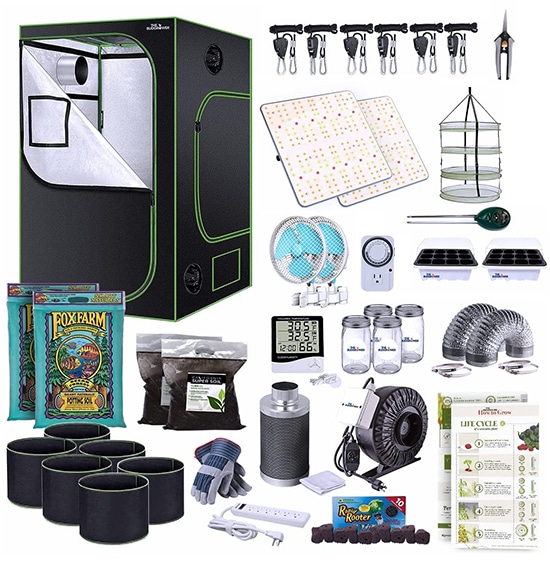 TheBudGrower Complete All-in-One Home Grow Solution 4x4x7ft- 2200W(2)
TheBudGrower Complete All-in-One Home Grow Solution 4x4x7ft- 2200W(2)
- LED lights specialty manufactured by VIVOSUN with Samsung LM301 diodes for FULL spectrum light
- The industries most durable grow tent – heavy duty 1680d oxford cloth
- Money & energy saving complete home grow tent kit
What are the Best Clay Pebbles in 2023?
With the rising popularity of hydroponic gardening, more brands offer clay pebbles suitable for home use than ever before. But not all clay aggregates perform the same when it comes to effectively supporting plant growth. When selecting the best clay pebbles, qualities like consistency in size, shape, and composition matter for both drainage and repeatable results.
Best Choice  | Grow !t GMC40l
| Check Price |
Also Great  | GEOLITE GMGC45L 45L Clay Pebbles
| Check Price |
Best Orchids  | UQYES 4.4lb Hydroponics Clay Pebbles Ceramsite Balls
| Check Price |
Best Hydroponics  | D’vine Dev Ceramic Planter Filler Balls
| Check Price |
Best Uniform-Size  | wohohoho 2.2lbs Mini Coffee Hydroponics Clay Pebbles
| Check Price |
Grow !t GMC40l

Grow !t GMC40l is a quality clay pebble product from Grow!t that offers high performance for hydroponic gardening. This overview will examine its key features and benefits in more detail:
The Grow!t GMC40l clay pebbles provide very consistent sizing at 8-16mm diameter per piece. This standardized grade allows reliable drainage and spacing within plant containers. The uniform balls also allow smooth flow in flood and drain systems without clogging outlets. Plants get evenly moistened while their roots receive ample air on all sides.

Image 1: Grow !t GMC40l – clay pebbles for plants example of planting plants in pots for DWC hydroponic and for Grow Tent too.
These clay aggregates also offer lasting durability that makes them reusable across multiple growing seasons. They resist algal growth and pathogen buildup when properly sterilized between uses. Their stable composition maintains the ideal pore spacing for healthy roots even after repeated soakings. Durability makes them a sound investment for home growers rather than single-use plastic-based aggregates.
Grow!t also attentively sources and manufactures these pebbles with sustainability in mind. As an American-made product, their carbon footprint from overseas shipping is minimized. Production waste is reclaimed during processing as much as possible while still achieving medical-grade purity standards. Grow!t GMC40l presents an eco-friendlier choice than heavily-mined alternatives, while still delivering commercial cultivation performance.
The size consistency, durable composition, and domestic sourcing of Grow!t GMC40l pebbles make them a standout choice for hydroponics. These high-grade clay aggregates bring professional quality to home growers for optimal indoor harvests across repeating seasons. Their conscientious manufacturing also appeals to environmentally-minded gardeners as well.
| Pros | Cons |
|---|---|
| Very consistent 8-16mm sizing for reliable drainage | Higher upfront cost than alternatives like perlite or LECA |
| Reusable for multiple seasons without degrading | Requires sterilization between uses to prevent pathogens |
| Made sustainably in the USA, minimizing transport footprint | |
| Allows smooth flow in flood table systems | |
| Keeps plant roots evenly moist while preventing waterlogging |
GEOLITE GMGC45L 45L Clay Pebbles

GEOLITE GMGC45L clay pebbles offer a high performance growing medium well suited to a range of hydroponic gardening applications. These consist of round, porous pebbles made from natural clay and fired to retain their shape through repeated use. The consistent 8-16mm diameter balls allow for excellent moisture control and drainage in hydro systems or soilless mixes.
A key benefit of GEOLITE pebbles is their longevity and resistance to algal growth across seasons. Cleaned and sterilized after harvest, they maintain their integrity for years rather than compacting or dissolving. Pathogens have difficulty establishing on the pebble surface as well. This reusable nature makes them a sound value investment for indoor gardeners focused on sustainability.

Image 2: Clay Pebbles example after washing and soaking and potting plants, for indoor & outdoor use.
These clay aggregates also provide just the right air:water balance that plant roots appreciate. Their porous internal structure doesn’t retain excess moisture while still hydrating plants evenly. Roots access ample oxygen for healthy respiration without waterlogging. This makes them suitable for flood and drain systems where drainage must be reliable.
| Pros | Cons |
|---|---|
| Durable composition resists algal growth for multi-year reuse | Requires initial investment which balances out over time |
| Even 8-16mm size provides excellent drainage and moisture control | Not as lightweight as options like perlite or vermiculite |
| Allows plant roots ample air exposure while retaining needed water | |
| Can be sterilized and reconditioned easily between uses | |
| American-made product involves less transport than imported alternatives |
UQYES 4.4lb Hydroponics Clay Pebbles Ceramsite Balls

The UQYES Ceramsite Balls provide a quality, affordable clay pebble option well-suited to small-scale home hydroponic gardens. These clay aggregates consist of highly porous pebbles fired into rounded balls measuring 8-16mm across. This sizing allows reliable drainage and airflow in containers while still fully moistening plant roots.
A standout feature of these pebbles is their low cost and smaller packaging compared to commercial-scale options. The 4.4lb bag allows trying out clay growing media before investing in bulk quantities. UQYES pebbles work well mixed into soilless media or alone in containers and narrow columns. Their bag is also resealable for storing leftovers.

Img. 3: Clay balls for plants an example of planting orchids in 3 types of pots
These affordable pebbles still deliver consistent quality that outperforms many budget-friendly alternatives, which compress or degrade over time. They resist algal growth and maintain their rigid structure across multiple seasons when properly cleaned. First-time hydroponic growers find these an approachable introduction without heavily increasing costs.
| Pros | Cons |
|---|---|
| Very budget-friendly price point | Not available in bulk sizes for large productions |
| Resealable 4.4 lb size is perfect for trying small-scale | Requires sterilization between uses to prevent pathogen carryover |
| Resists algae and maintains structure for multi-year reuse | |
| Reliable drainage and oxygenation for plant roots | |
| Appealing introduction to clay media for new hydroponic growers |
D’vine Dev Ceramic Planter Filler Balls

D’vine Dev Ceramic Balls offer a unique take on clay pebbles, providing small, lightweight aggregates perfect for custom mixed soilless media. Ranging 3-5mm in size, they create excellent aeration and moisture control when blended into potting mixes. Their bright white color also makes an attractive addition to ornamental planters.

Image 4: Hydroton clay pebbles Original Expanded Clay Pebbles.
These tiny porous pebbles elevate drainage and root health for houseplants and delicate indoor gardening. Used alone, their smaller size is best suited to seeds, propagations, and microgreens rather than support for larger plants. When filling window boxes and accent planter arrangements, they reduce soil compaction while adding eye-catching highlights.
A standout advantage of D’vine Dev’s filler balls is their crushed marble composition. Often lighter than fired clay, they reduce overall weight in hauling bags of soil amendments. Their neutral pH also makes integrating them into custom mixes simple, without skewing acidity. Dense but tiny, a little goes a long way towards improving soil structure.
| Pros | Cons |
|---|---|
| Small 3-5mm size, great for mixing into soilless media | Too small for solely filling large planters |
| Increases drainage and air pockets for plant roots | Can shift heavily if roots don’t anchor well |
| Bright white color provides decorative accents | |
| Neutral pH doesn’t alter acidity balance | |
| Dense and lightweight crushed marble composition |
wohohoho 2.2lbs Mini Coffee Hydroponics Clay Pebbles

The wohohoho Mini Coffee Clay Pebbles offer a unique sized clay growing medium perfect for miniature hydroponic systems. Ranging just 4-8mm in diameter, they are one of the smallest clay aggregates available. Their tiny pebble size allows growing microgreens, herb starts, and delicate seedlings with proper airflow and drainage.
These mini clay balls shine when used in narrow vessels like hanging growth columns, wall mounted planters, and tiered hydro towers. Their petite proportions won’t clog small-scale irrigation lines. Their dark coffee color also lends an earthy, natural aesthetic to kitchen herb gardens and living wall planters where visibility matters.
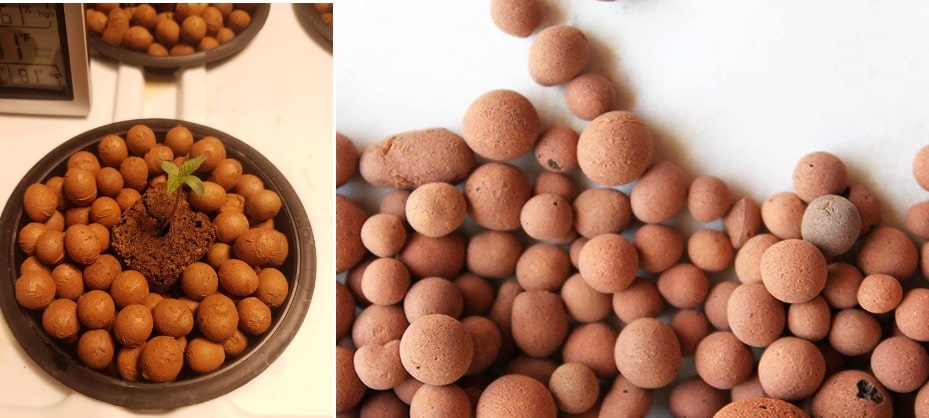
Image 5: Clay pebbles for plants Expanded Clay Growing Media.
While too small for mature plants, these micro clay pebbles give seed germinations and propagations a leg up before transplanting into larger planters. They also work nicely combined into bonsai soil mixes to encourage fines root development. For urban gardeners with limited space, they optimize planting in modest containers.
In summary, the tiny scale and coffee shade of the wohohoho Mini Coffee Pebbles carved out niche specialty uses where standard Hydroton pebbles fall short. Their smaller dimensions cater creatively to miniature hydroponic systems, seed starting needs, and mixed ornamental applications for maximum appeal.
| Pros | Cons |
|---|---|
| Small 4-8mm size, perfect for microgreens and starts | Too small for mature plant stability |
| Allows growing in narrow vessels like hanging columns | Not a standalone option for larger plants |
| Coffee color provides natural, earthy aesthetic | |
| Won't clog small-scale irrigation systems | |
| Encourages fine feeder roots for transplants |
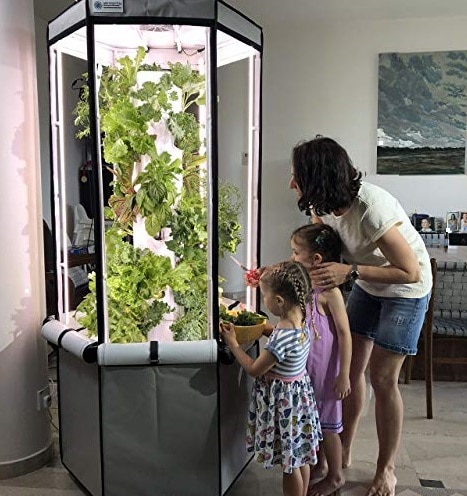
 Aerospring 27-Plant Vertical Hydroponics Indoor Growing System
Aerospring 27-Plant Vertical Hydroponics Indoor Growing System
- Easy to use aeroponic system for your home
- Fan - Grow Lettuce, Herbs, Veggies & Fruits
- Grow smart & eat healthy, 20 gallon water reservoir Grow Tent, LED Grow Lights
FAQ
What plants should not be grown in hydroton?
Plants that should not be grown in hydroton clay pebbles include:
- Large flowering plants that require stable support like tomatoes, cucumbers, squash - install trellises instead
- Water-sensitive succulents and cacti that prefer fast-draining soil
- Plants highly sensitive to specific pH balances
- Plants needing consistent darkness for rooting like potatoes, garlic
- Highly invasive plants where fallen debris should be contained
Can I mix clay pebbles with soil?
You can successfully mix clay pebbles into soil-based potting mixes. A 25-40% ratio provides the moisture wicking benefits of Hydroton while the soil blend still anchors roots. However, clay pebbles should never be mixed into garden beds or in-ground plantings. They will float up over time and alter soil chemistry. Container mixes work best for incorporating Hydroton.
Do you have to clean clay pebbles?
It is highly recommended to clean LECA clay pebbles between uses. While they are reusable for many seasons, they accumulate mineral deposits, pathogens, and wasted nutrients over time. Sterilizing with boiling water or a mild bleach solution prepares them to function optimally again. Skipping this step risks carrying over harmful bacteria or fungi spores to future plantings.
Is hydroton better than soil?
LECA clay aggregates offer some clear benefits over soil, but have downsides too. LECA is reusable year after year and resists compacting from repeated use. It's lighter than soil, making moving containers easier. Roots access more air exposure and plants show faster growth rates. However, LECA requires more attentive watering and fertilization schedules tailored to the plant variety compared to soil which offers a buffer.
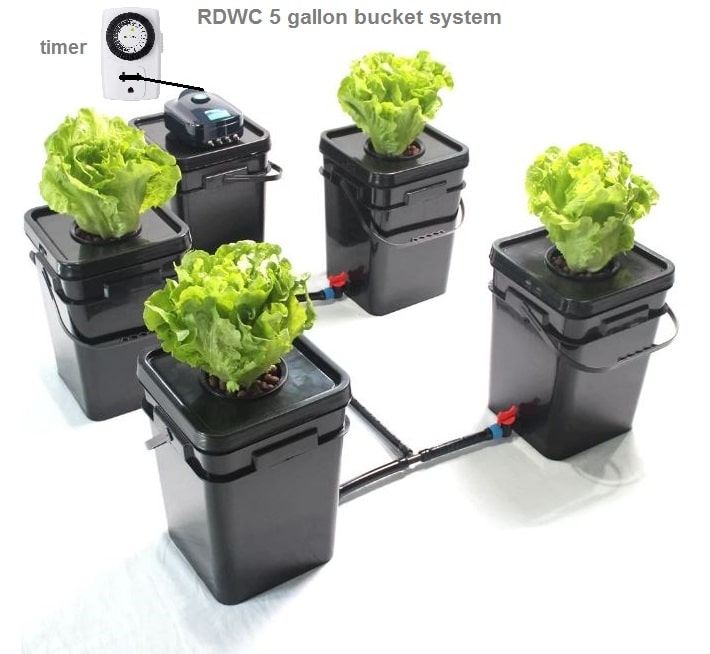
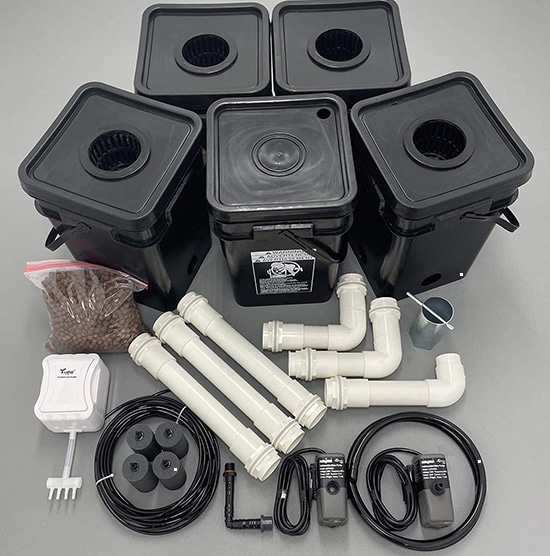 Recirculating Deep Water Culture (RDWC) Hydroponic Grow Kit System
Recirculating Deep Water Culture (RDWC) Hydroponic Grow Kit System
- Reservoir Bucket Connected to 4 Grow Buckets
- 400 Gallon/hour Circulating Pump
- Large 5 gallon square buckets, pre-drilled
